-
 Bitcoin
Bitcoin $107,352.1067
0.28% -
 Ethereum
Ethereum $2,429.3531
-0.90% -
 Tether USDt
Tether USDt $1.0001
-0.02% -
 XRP
XRP $2.1894
4.62% -
 BNB
BNB $646.7968
0.36% -
 Solana
Solana $147.4290
4.03% -
 USDC
USDC $0.9998
-0.02% -
 TRON
TRON $0.2756
1.52% -
 Dogecoin
Dogecoin $0.1630
1.14% -
 Cardano
Cardano $0.5612
1.18% -
 Hyperliquid
Hyperliquid $37.0580
-0.05% -
 Bitcoin Cash
Bitcoin Cash $496.9410
-0.09% -
 Sui
Sui $2.7318
3.19% -
 Chainlink
Chainlink $13.1503
0.58% -
 UNUS SED LEO
UNUS SED LEO $9.0766
0.55% -
 Avalanche
Avalanche $17.7220
1.46% -
 Stellar
Stellar $0.2380
1.52% -
 Toncoin
Toncoin $2.8439
0.38% -
 Shiba Inu
Shiba Inu $0.0...01143
1.84% -
 Litecoin
Litecoin $85.8053
1.47% -
 Hedera
Hedera $0.1483
2.70% -
 Monero
Monero $314.3240
2.12% -
 Bitget Token
Bitget Token $4.6725
0.77% -
 Dai
Dai $1.0000
0.00% -
 Polkadot
Polkadot $3.3555
1.28% -
 Ethena USDe
Ethena USDe $1.0001
0.02% -
 Uniswap
Uniswap $7.0890
2.64% -
 Pi
Pi $0.5355
-3.40% -
 Pepe
Pepe $0.0...09393
1.06% -
 Aave
Aave $256.8136
-1.90%
What is the transaction fee of Crypto.com's NFT market? Which chains are supported?
Crypto.com's NFT market charges a 2% transaction fee on sales, supports Cronos, Ethereum, and Polygon chains, with varying network fees based on blockchain congestion.
May 11, 2025 at 01:43 pm
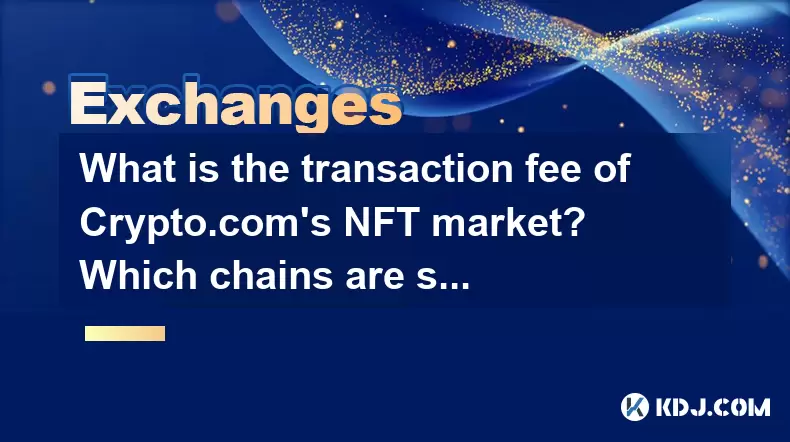
Crypto.com's NFT market has become an increasingly popular platform for trading non-fungible tokens (NFTs). As users navigate the ecosystem, understanding the transaction fees and supported chains is crucial for a seamless experience. This article delves into the specifics of Crypto.com's NFT market, focusing on the transaction fees and the blockchain networks it supports.
Understanding Transaction Fees on Crypto.com's NFT Market
Transaction fees on Crypto.com's NFT market are an essential aspect to consider when buying or selling NFTs. The platform charges a 2% transaction fee on each sale. This fee is deducted from the final sale price and is used to cover the costs of maintaining the platform and facilitating transactions.
For example, if you sell an NFT for 100 CRO, the transaction fee would be 2 CRO, leaving you with 98 CRO after the sale. It's important to note that this fee is standard across all transactions on the platform, ensuring a consistent pricing model for users.
Additional Costs to Consider
In addition to the 2% transaction fee, users should also be aware of potential network fees. These fees are charged by the blockchain network on which the NFT is minted or transferred. The amount of the network fee can vary depending on the blockchain used and the current network congestion.
For instance, if you are minting an NFT on the Ethereum blockchain, you may encounter higher gas fees during peak times. Crypto.com's NFT market strives to keep these fees as low as possible, but they are ultimately determined by the blockchain's protocol.
Supported Chains on Crypto.com's NFT Market
Crypto.com's NFT market supports a variety of blockchain networks, providing users with flexibility and choice. The platform currently supports the following chains:
- Cronos (CRO)
- Ethereum (ETH)
- Polygon (MATIC)
Each of these chains offers unique benefits and features, catering to different user preferences and needs.
Cronos (CRO) Chain
The Cronos chain is Crypto.com's native blockchain, designed to offer fast and low-cost transactions. When using Cronos for NFT transactions, users benefit from:
- Lower transaction fees compared to other chains.
- Faster transaction times, making it ideal for high-volume trading.
- Native integration with Crypto.com's ecosystem, providing a seamless user experience.
To use the Cronos chain for NFT transactions, follow these steps:
- Log into your Crypto.com account.
- Navigate to the NFT market.
- Select the NFT you wish to buy or sell.
- Choose Cronos as the blockchain network.
- Complete the transaction, ensuring you have sufficient CRO in your wallet to cover the transaction fee and any network fees.
Ethereum (ETH) Chain
The Ethereum chain is one of the most widely used blockchains for NFTs due to its established infrastructure and support for smart contracts. When using Ethereum for NFT transactions, users should consider:
- Higher transaction fees during peak times, known as gas fees.
- Wider compatibility with other NFT platforms and marketplaces.
- Robust security and decentralization features.
To use the Ethereum chain for NFT transactions, follow these steps:
- Log into your Crypto.com account.
- Navigate to the NFT market.
- Select the NFT you wish to buy or sell.
- Choose Ethereum as the blockchain network.
- Complete the transaction, ensuring you have sufficient ETH in your wallet to cover the transaction fee and any network fees.
Polygon (MATIC) Chain
The Polygon chain is known for its scalability and low transaction costs, making it an attractive option for NFT transactions. When using Polygon for NFT transactions, users can benefit from:
- Low transaction fees, making it cost-effective for frequent trading.
- Fast transaction times, similar to Cronos.
- Interoperability with Ethereum, allowing for seamless transfers between chains.
To use the Polygon chain for NFT transactions, follow these steps:
- Log into your Crypto.com account.
- Navigate to the NFT market.
- Select the NFT you wish to buy or sell.
- Choose Polygon as the blockchain network.
- Complete the transaction, ensuring you have sufficient MATIC in your wallet to cover the transaction fee and any network fees.
How to Check and Manage Transaction Fees
Understanding and managing transaction fees is crucial for maximizing the value of your NFT transactions. Here are some tips to help you navigate the fees on Crypto.com's NFT market:
- Monitor network congestion: Keep an eye on the current network congestion for the blockchain you are using. Lower congestion typically results in lower network fees.
- Use the appropriate chain: Choose the blockchain that best suits your needs. For example, if you prioritize low fees, Cronos or Polygon may be better options than Ethereum.
- Calculate fees in advance: Before listing an NFT for sale or making a purchase, calculate the total fees you will incur. This includes the 2% transaction fee and any network fees.
To check the estimated transaction fees on Crypto.com's NFT market, follow these steps:
- Log into your Crypto.com account.
- Navigate to the NFT market.
- Select the NFT you wish to buy or sell.
- Choose the desired blockchain network.
- Review the estimated transaction fee displayed before confirming the transaction.
Frequently Asked Questions
Q: Can I change the blockchain network after listing an NFT for sale?
A: No, once an NFT is listed for sale on a specific blockchain network, you cannot change the network. You would need to delist the NFT and relist it on the desired network.
Q: Are there any discounts available for transaction fees on Crypto.com's NFT market?
A: Currently, Crypto.com does not offer any discounts on transaction fees for its NFT market. The standard 2% fee applies to all transactions.
Q: How can I transfer my NFTs between different blockchain networks on Crypto.com's NFT market?
A: To transfer NFTs between supported chains, you typically need to use a bridge service. Crypto.com supports transfers between Cronos, Ethereum, and Polygon using their integrated bridge. Follow these steps:
- Log into your Crypto.com account.
- Navigate to the NFT section.
- Select the NFT you wish to transfer.
- Choose the "Transfer" option.
- Select the destination blockchain network.
- Confirm the transfer, ensuring you have sufficient funds to cover any bridge fees.
Q: What happens if I do not have enough funds to cover the transaction fees on Crypto.com's NFT market?
A: If you do not have enough funds to cover the transaction fees, the transaction will fail. You will need to add more funds to your wallet before retrying the transaction.
Disclaimer:info@kdj.com
The information provided is not trading advice. kdj.com does not assume any responsibility for any investments made based on the information provided in this article. Cryptocurrencies are highly volatile and it is highly recommended that you invest with caution after thorough research!
If you believe that the content used on this website infringes your copyright, please contact us immediately (info@kdj.com) and we will delete it promptly.
- Altcoins, Explosive Gains, and Cryptocurrency: What's the Hype?
- 2025-06-28 21:12:19
- SEI Mirroring Solana: Price Spikes and the Next Big Crypto?
- 2025-06-28 20:52:13
- Pi Network's Pi2Day: Token Tank and Disappointing Rollout?
- 2025-06-28 21:27:13
- PENGU Price Surges: Are Whales Targeting $0.0149?
- 2025-06-28 20:30:12
- Bitcoin Adoption, Portfolio Allocation, and Financial Advisors: A New Era
- 2025-06-28 21:27:13
- Kaanch vs. XRP: Spotting the Next Big Thing & Entry Price Opportunities
- 2025-06-28 21:50:12
Related knowledge
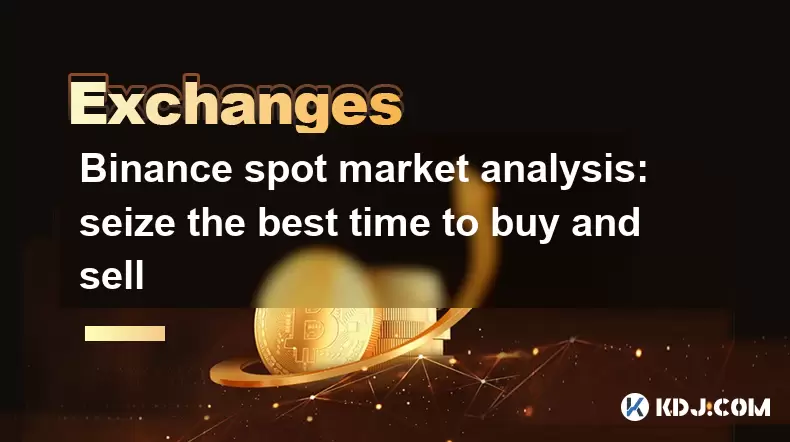
Binance spot market analysis: seize the best time to buy and sell
Jun 19,2025 at 04:56pm
Understanding the Binance Spot MarketThe Binance spot market is one of the most popular platforms for cryptocurrency trading globally. It allows users to trade digital assets at current market prices, making it essential for traders aiming to buy low and sell high. Unlike futures or margin trading, spot trading involves direct ownership of the asset aft...
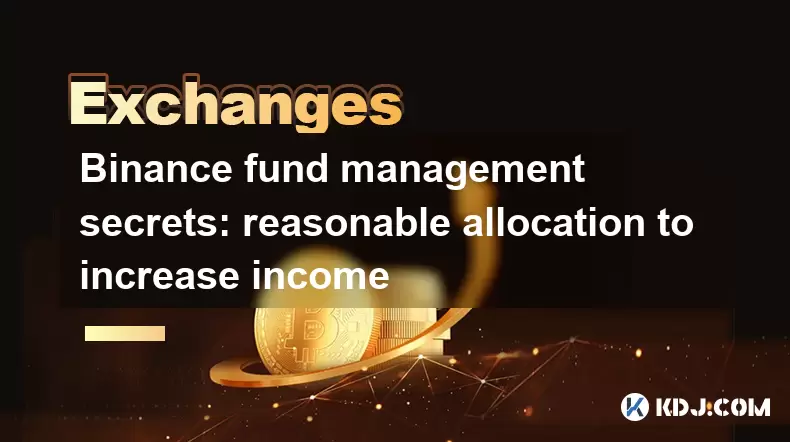
Binance fund management secrets: reasonable allocation to increase income
Jun 22,2025 at 02:29pm
Understanding Binance Fund ManagementBinance fund management involves strategic allocation of your cryptocurrency assets to optimize returns while managing risk. The key to successful fund management lies in understanding how different investment options on the Binance platform can be utilized to create a diversified portfolio. This includes spot tradin...
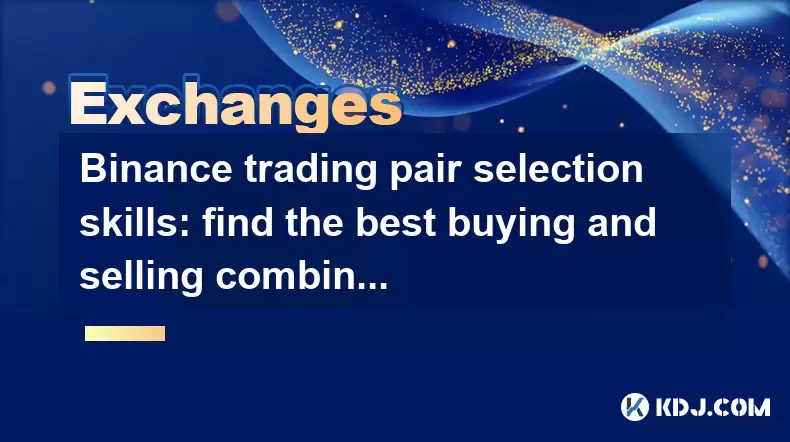
Binance trading pair selection skills: find the best buying and selling combination
Jun 23,2025 at 02:49am
Understanding the Basics of Trading Pairs on BinanceBefore diving into trading pair selection skills, it's essential to understand what a trading pair is. On Binance, a trading pair refers to two cryptocurrencies that can be traded against each other. For example, BTC/USDT means Bitcoin is being traded against Tether. Each trading pair has its own liqui...
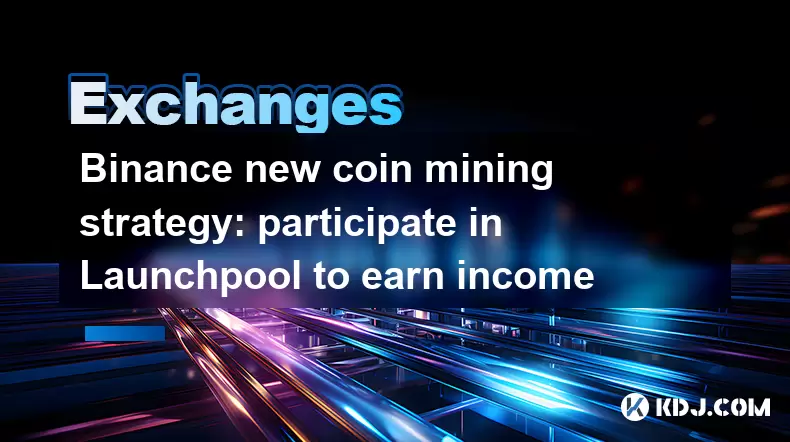
Binance new coin mining strategy: participate in Launchpool to earn income
Jun 23,2025 at 11:56am
What is Binance Launchpool and how does it work?Binance Launchpool is a feature introduced by the world’s largest cryptocurrency exchange, Binance, to allow users to earn new tokens through staking. This platform enables users to stake their existing cryptocurrencies (such as BNB, BUSD, or other supported assets) in exchange for newly launched tokens. T...
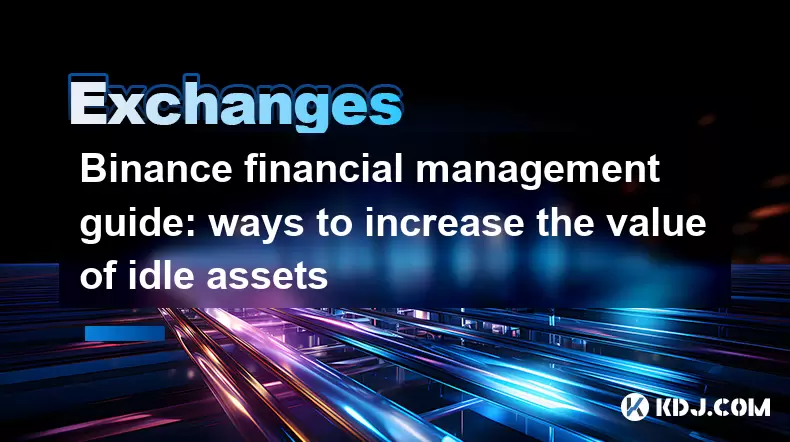
Binance financial management guide: ways to increase the value of idle assets
Jun 19,2025 at 11:22pm
Understanding Idle Assets in the Cryptocurrency SpaceIn the fast-paced world of cryptocurrency, idle assets refer to digital currencies that are not actively being used for trading, staking, or yield farming. Holding these funds in a wallet without utilizing them means missing out on potential growth opportunities. Binance, as one of the leading platfor...
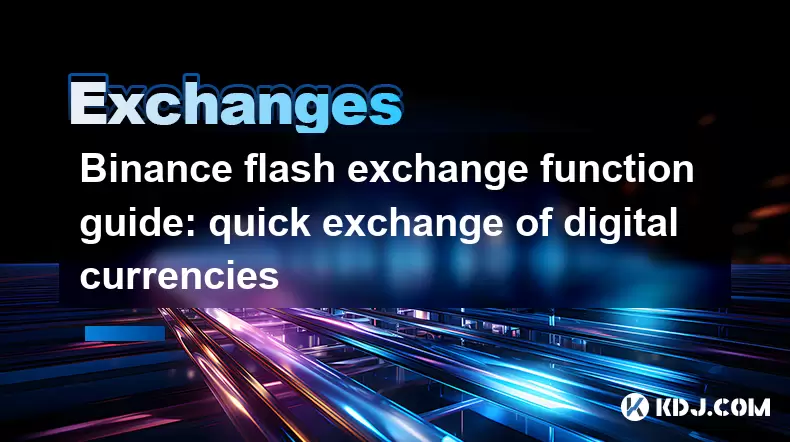
Binance flash exchange function guide: quick exchange of digital currencies
Jun 23,2025 at 12:29pm
What is the Binance Flash Exchange Function?The Binance Flash Exchange function is a powerful tool designed to allow users to instantly swap between supported cryptocurrencies without the need for placing traditional buy/sell orders. This feature simplifies the trading process by offering a direct exchange mechanism, eliminating the requirement to conve...

Binance spot market analysis: seize the best time to buy and sell
Jun 19,2025 at 04:56pm
Understanding the Binance Spot MarketThe Binance spot market is one of the most popular platforms for cryptocurrency trading globally. It allows users to trade digital assets at current market prices, making it essential for traders aiming to buy low and sell high. Unlike futures or margin trading, spot trading involves direct ownership of the asset aft...

Binance fund management secrets: reasonable allocation to increase income
Jun 22,2025 at 02:29pm
Understanding Binance Fund ManagementBinance fund management involves strategic allocation of your cryptocurrency assets to optimize returns while managing risk. The key to successful fund management lies in understanding how different investment options on the Binance platform can be utilized to create a diversified portfolio. This includes spot tradin...

Binance trading pair selection skills: find the best buying and selling combination
Jun 23,2025 at 02:49am
Understanding the Basics of Trading Pairs on BinanceBefore diving into trading pair selection skills, it's essential to understand what a trading pair is. On Binance, a trading pair refers to two cryptocurrencies that can be traded against each other. For example, BTC/USDT means Bitcoin is being traded against Tether. Each trading pair has its own liqui...

Binance new coin mining strategy: participate in Launchpool to earn income
Jun 23,2025 at 11:56am
What is Binance Launchpool and how does it work?Binance Launchpool is a feature introduced by the world’s largest cryptocurrency exchange, Binance, to allow users to earn new tokens through staking. This platform enables users to stake their existing cryptocurrencies (such as BNB, BUSD, or other supported assets) in exchange for newly launched tokens. T...

Binance financial management guide: ways to increase the value of idle assets
Jun 19,2025 at 11:22pm
Understanding Idle Assets in the Cryptocurrency SpaceIn the fast-paced world of cryptocurrency, idle assets refer to digital currencies that are not actively being used for trading, staking, or yield farming. Holding these funds in a wallet without utilizing them means missing out on potential growth opportunities. Binance, as one of the leading platfor...

Binance flash exchange function guide: quick exchange of digital currencies
Jun 23,2025 at 12:29pm
What is the Binance Flash Exchange Function?The Binance Flash Exchange function is a powerful tool designed to allow users to instantly swap between supported cryptocurrencies without the need for placing traditional buy/sell orders. This feature simplifies the trading process by offering a direct exchange mechanism, eliminating the requirement to conve...
See all articles
























































































